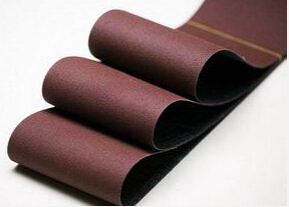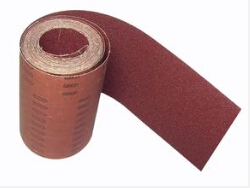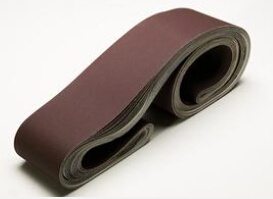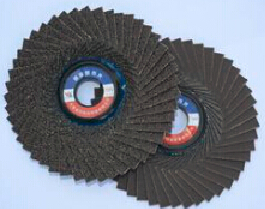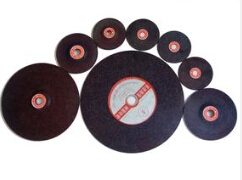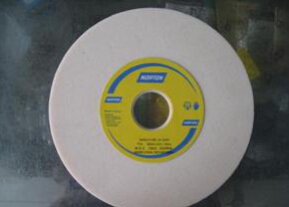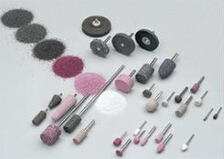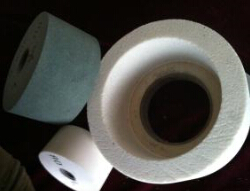Recycle of Glass
Zhongsen Editor 2022-04-13There are a lot of residential and industrial glass waste every day. Its existence is not only easy to cause harm and inconvenience to people's production and life, but also bring environmental pollution, occupy valuable land resources, increase environmental load, but also cause a lot of waste of resources and energy.
According to statistics, for each ton of glass products, about 700 ~ 800 kg of quartz sand, 100 ~ 200 kg of soda ash and other chemical raw materials are consumed. In total, for each ton of glass products, 1.1 ~ 1.3 tons of raw materials are used, and a large amount of coal, oil and electricity are also consumed.
What is more troublesome is that waste glass is a kind of waste that cannot be burned, naturally degraded in landfill, and decomposed and treated by general physical and chemical methods. Studies have shown that the natural degradation time of glass and its products can be as long as 4000 years.
Due to glass manufacturing and processing, waste glass generally contains heavy metals such as zinc and copper. If it is not handled properly, it may also pollute soil and groundwater. In addition, glass is easy to break. Once someone or animal tries to swallow or lick the food or drink left on the glass fragments, they may be seriously injured.
How is Glass Recycled
The recycling of waste glass is mainly to collect the polluted waste glass and conduct centralized treatment to obtain qualified and usable waste glass. The technological process is to first clean the polluted glass, then crush it to the appropriate particle size according to the requirements, then remove the impurities such as metal, stone, soil and ceramics mixed in the waste glass, and finally sort the colors, stack the waste glass of different colors separately for recycling.
The fragmentation of broken glass must be appropriate. It will be difficult to transport thick broken glass, because the conveying of broken glass is mostly completed by bucket elevator and belt conveyor. These equipment have certain requirements for the overall dimensions of the transported solid materials. Exceeding the limit will cause material blockage, affect the uniformity of mixture and the quality of glass products, and too fine broken glass is also bad, Because when the particle size of broken glass is fine enough to be equal to that of other raw materials in the batch, the broken glass will share the contact opportunity with pure sealing with silica sand, making it difficult for the quartz sand in the batch to melt and delaying the glass melting process.
When the particle size of broken glass is less than 0.25 mm and 2 ~ 20 mm, both have good effect on melting. In production, the particle size of the latter is used to reduce the power used for crushing. Considering the processing factors of broken glass of various shapes, the particle size of 20 ~ 40mm is usually appropriate.
Applications of Recycled Glass
Waste glass recycling technology and methods are relatively mature at present. For example, after classified inspection, selection and processing, waste glass can be used as raw materials for glass production and used for the production of glass products with low requirements for raw material quality, chemical composition and color, such as colored bottle glass, glass insulator, hollow glass brick, grooved glass, embossed glass and colored glass ball; It can be processed into glass products, such as foam glass, solid glass bead, silicon glass ceramic composite material and glass mosaic. It can also be used as the main addition material of quartz stone plate, artificial marble, artificial granite and other building materials.
- Waste Glass used as Filler for Asphalt Road
The recycled waste glass can be used as the filler of asphalt road, and the glass can be mixed with stone and ceramic materials; There is no need to sort in color; The disposal site of glass waste and garbage is located near the road construction equipment, which can save the freight of filler and so on. Using glass as road filler can reduce the accident of vehicle lateral sliding and overturning than using other materials; Proper reflection of light; The pavement is in good wear condition; The snow melts quickly and is suitable for use in places with low temperature.
- Waste Glass to replace Rock Aggregate
The United States applies a large amount of waste glass in the construction industry, such as using waste glass instead of rock aggregate, clay materials of various bricks and aggregates of cement block products, and using glass powder instead of clay mineral components in clay bricks. It can be used as flux. Generally, glass can increase the weathering resistance and strength of clay bricks. When glass is used as flux, it can reduce the firing temperature, save energy, reduce cost and increase the output of bricks by 50%. Some brick factories in Europe have replaced the more expensive flux feldspar with glass.
- Waste Glass used in Construction
Waste glass is applied to concrete in the United States. Many studies show that the concrete containing 35% glass masonry has reached or exceeded the minimum standards of compressive strength, linear shrinkage, water absorption and water content issued by the American Society for testing and materials. Although some high alkali cements can erode glass bone, there are many methods to solve this problem.
- Production of Veneer Materials from Broken Glass
In the 1980s, sigal ceramic materials company of the United States successfully developed and produced colorful veneer materials with the size of 2cm2 and the thickness of 4mm with broken glass, which is very popular with customers. The technological process is as follows: first crush the broken glass and grind it into powder particles with a diameter of 1mm, then mix the powder particles with the organic pigment of the required color, put it into the mold and cold press it into the required shape, and then put the blank into the heating furnace and heat it until each powder particle on the surface of the blank is softened and the particles are fused together. Since only the glass powder particles on the surface of the blank need to be softened, the heating temperature only needs 750 ℃. The product is an excellent veneer material for buildings. It can also be used for decorations and some equipment. The process is simple, energy consumption is low and production cost is low.
- Production of Glass Beads from Broken Glass
In foreign countries, the process of using broken glass to produce glass beads as road sign reflective materials is very common. Almost all beads are made of 100% broken glass. It is reported that the United States is one of the earliest countries in the world to use broken glass to produce glass beads as road sign reflective materials. The consumption of broken glass used to make glass beads is more than 50000 tons every year.
According to Japanese media reports, a Japanese manufacturer has developed a kind of glass bead that changes color and light when encountering. The manufacturing method is to break the recycled waste glass bottle into granules, color it with coloring adhesive, and make mosaics or shapes by using fluorescent color and light storage night light technology. When the product encounters light, the color will change dreamily with the change of light irradiation angle and illumination.
- Production of Glass Wool from Broken Glass
Owens Corning Glass fiber factory in California is a large manufacturer of glass wool in the United States. It has successfully used 50% broken glass to produce glass wool for many years. Using broken glass to produce glass wool only requires less raw materials and energy. Owens Corning found that using broken glass to produce glass wool can save 60% silica and 40% soda ash, and save 10% energy consumption.
- Broken glass is used in Agricultural Production
Broken glass can be used to improve the drainage system and water distribution, so as to improve the agricultural soil conditions. The broken glass is processed into small particles with a diameter of 1.4 ~ 2.8 mm and treated with organic matter to make its surface attached with a very thin layer of organic matter. If mixed with hydrophilic substances in a certain proportion, it is applied to dry farmland to maintain the water in the soil; It is mixed with hydrophobic substances in a certain proportion, which plays the role of water seepage after being applied to the farmland with more rain and reduces the soaking time of water in the roots of plants.
- Producing Foam Glass from Waste Glass
The United States, Canada and Europe all use waste glass to produce foam glass. After crushing the waste glass, add calcium carbonate, carbon powder, foaming agent and foaming accelerator, mix it evenly and put it into a mold and put it into the furnace to heat. Under the condition of softening temperature, the glass is added with foaming agent to form bubbles, which is made into foam glass, and is released, demoulded, annealed and sawed into standard size.
- Glass ceramics made from waste glass
Tokyo Metropolitan Industrial Technology Research Institute has successfully developed a recycling technology for producing glass ceramics from urban wastes such as glass bottles and broken glass. In the composition of glass ceramics, broken glass of glass bottle and concrete sludge account for more than 95%, and then mixed with iron sulfide, sodium sulfate and graphite to control the direction of crystallization. According to the data, it is manufactured through the glass chemical process and crystallization chemical process. Firstly, the raw materials are mixed, and then heated to 1450 ℃, and the glass ceramics are generated in the annealing process. This crystal is in the form of wollastonite, with bending strength of about 28 MPa, 1.65 times that of marble and acid resistance of about 8 times. It can be used as building materials.
- Production of Sound-absorbing Board from Waste Glass
Japan's Nippon Steel chemical company produces hard sound-absorbing plates from waste glass. Compared with the previous hard ceramic sound-absorbing board, it not only reduces the price by half, reduces the weight, but also improves the strength. The board is made of light spherical particles made of waste glass. The weight per square meter is 5 ~ 10 kg, which is 25% ~ 35% of that of ordinary porcelain hard sound-absorbing plate. The bending strength is doubled, but the sound-absorbing performance is the same.
- Waste automotive glass for ceramic tiles
Japan's Toyota Motor Company and ceramic tile manufacturer Yinai Ceramics Co., Ltd. jointly developed the technology of separating broken glass from the waste treated by waste vehicles. The broken glass is crushed and processed into glass powder with a particle size of 20 microns, mixed into ceramic tile raw materials at a rate of 3%, and fired into ceramic tiles at 1200 ℃. At this time, the bending strength of the ceramic tile is 33.34 MPa, which is 10% higher than the previous one, and can make the ceramic tile thinner.
- Production of Architectural Coatings from Waste Glass
A Japapnese company has successfully developed a cheap coating mixed with broken glass, which has been applied to roads, buildings, bedroom walls, door coatings and so on. The object mixed with broken glass paint can produce diffuse reflection if exposed to car lights or sunlight, which has the dual effects of preventing accidents and good decorative effect. The production method is to break the recycled waste empty glass bottle, grind off the edges and corners, process it into a safe edge, become broken glass with almost the same shape as natural sand, and then mix it evenly with an equal amount of paint.

